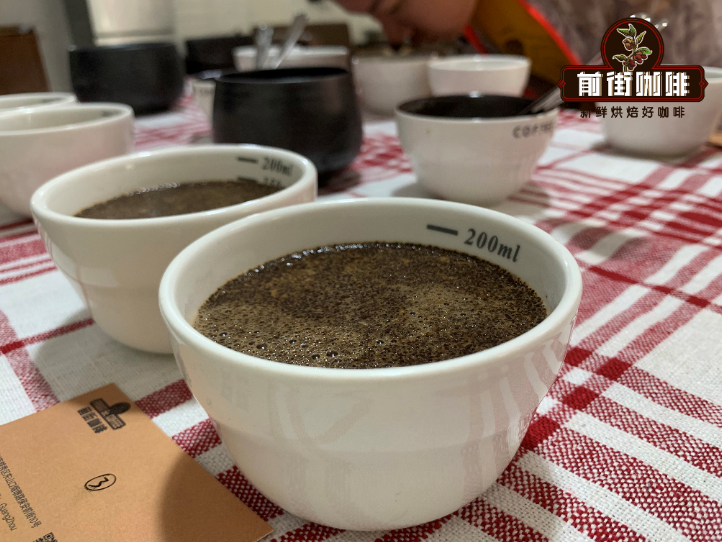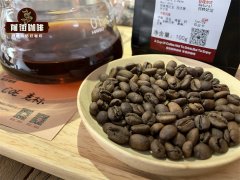Coffee cup test detailed process introduction coffee cup test steps analysis coffee cup test preparation
Being able to understand the flavor characteristics of coffee not only looks impressive. It can also improve the enjoyment of coffee. Although it seems impossible to distinguish the flavor characteristics at first, it is actually easy to train the taste of coffee. Like anything, practice makes perfect. The more we are exposed to the different flavors and properties of coffee, the better we can identify them.
Coffee cup testing is an entry way to understand the flavor characteristics of coffee. Once you have mastered it, you may be more fascinated by coffee. Qianjie Coffee shares with you the key steps of these coffee cup tests to make your coffee cup test experience easier.

Step 1: find the coffee cup to test the network
First of all, you should find a local roaster, coffee shop or coffee network, and test and taste coffee cups regularly. Go to several stores and ask them if they take a coffee cup test. It may seem difficult at first, especially if you live in a small town, but stick to it; you'll find one eventually.
Step 2: get the flavor wheel
From Counter Culture Coffee flavor wheel, it has the best layout and flavor range. It can be downloaded from their website and can be enlarged to a fairly large size, so you can even nail it to the wall.
Study it to familiarize yourself with the category and make sure you carry it with you when you test / taste your coffee cup.
Step 3: make sure the taste is balanced
When will you really start drinking coffee? Don't worry, we have finally reached that stage. The first thing to know is that different smells irritate different parts of the tongue. When drinking coffee (or anything else), try to determine which part of the tongue you can taste. Then compare it with the flavor wheel and you can see what it tastes like. Start tasting the diary and write down what you can taste. The idea that different tastes stimulate different parts of the tongue is scientifically controversial. However, I think this exercise is still very useful for participating in and analyzing different tastes.
Do you think it's hard? A simple exercise is to dissolve some powerful ingredients (sugar, salt, lemon, etc.) in water and taste them.
Step 4: identify the taste
Do you know how we started tasting coffee? I'm afraid we'll have to put it back to the next step, and once we get used to the general flavor of coffee, it will come back. Try to taste good, but if we don't know the difference between lemongrass and lemonade, we still can't recognize them.
I want to practice tasting some common coffee flavors. Decorate all kinds of things. I always use lemons, grapefruit, oranges, apples, strawberries / mixed berries, 70% dark chocolate, salted cashews and butter biscuits. This choice provides you with a variety of taste balance attributes and covers many of the more common coffee flavors. Personally, I prefer to keep the taste simple in the first place. I can also add one or two spices and some herbs to the flavor wheel. It's best to try sweet fruit first, then eat more acidic fruit, then chocolate, then nuts, and finally butter biscuits. Write down the content and location of the tasting, and constantly refer to the flavor wheel to help you get used to these categories.
Step 5: taste the coffee
Although the taste is fresh in my mind, it's time to taste the coffee. First, clean the taste by drinking some water or chewing pure white bread. In addition, please make sure that the flavor wheel is on hand.
Follow these four steps when testing a cup of coffee:
1. Have a good drink. Write down your first impressions (such as water, fruit, citrus, nutty), whether they are good or bad, and where on your tongue you can taste it.
two。 Take another sip to enhance the taste and make any changes to the notes as needed.
3. Take a good sip, the louder the better! Sipping allows the coffee to cover the entire surface of the tongue and increases the amount of oxygen, thus enhancing the sensation of the mouth.
4. Sip the coffee and rotate it around your mouth for about 5 seconds, then swallow. You will experience the full taste of coffee and should be able to identify exactly where it resonates on your tongue. Don't forget to write it down!
Learning to identify the taste in coffee takes a lot of time and practice, and you can go from a novice to a professional by repeating these five steps. While we all like the taste, aroma and caffeine hum of a good cup of coffee, learning how to analyze the balance between taste and taste can add new enjoyment.
Important Notice :
前街咖啡 FrontStreet Coffee has moved to new addredd:
FrontStreet Coffee Address: 315,Donghua East Road,GuangZhou
Tel:020 38364473
- Prev

Diversity of Colombian refined coffee varieties Colombia's natural diversity can prevent coffee pests
More than 50% of Colombia's forests are natural. It has 55000 kinds of animals and plants. According to the Financial Times, 10% of the world's biodiversity can be found in the Amazon region of Colombia. The biodiversity in Colombia is shocking. You can taste it in every cup of coffee. But these are not just impressive facts. They are also what my country can do.
- Next

Is the acid of fine coffee called caffeic acid? is there a scientific basis for the acid of coffee?
When you drink a kind of coffee with good acidity, you may feel very common, because you don't know how to describe it, only for people who don't know much about coffee. In the Qianjie Coffee Factory, when testing new beans, the baker will always take the trouble to explain to us the sour coffee, its flavor and what tone it belongs to.
Related
- What brand of black coffee is the most authentic and delicious? what are the characteristics of the flavor of the authentic Rose Summer Black Coffee?
- Introduction to the principle and characteristics of the correct use of mocha pot A detailed course of mocha pot brewing coffee is described in five steps.
- Which is better, decaf or regular coffee? how is decaf made?
- How much is a bag of four cat coffee?
- How about four Cat Coffee or Nestle Coffee? why is it a cheap scam?
- Which is better, Yunnan four Cats Coffee or Nestle Coffee? How about cat coffee? is it a fake scam? why is it so cheap?
- How about Cat Coffee? what grade is a hoax? which instant coffee tastes better, four Cat Coffee, Nestle Coffee or G7 coffee?
- Process flow chart of coffee making-Starbucks coffee making process what coffee tastes good at Starbucks
- The top ten best coffee beans in the world Rose summer coffee or Tanzanian coffee tastes good
- Yunnan four cat coffee is good to drink?_four cat coffee is a big brand? four cat blue mountain coffee is fake?

